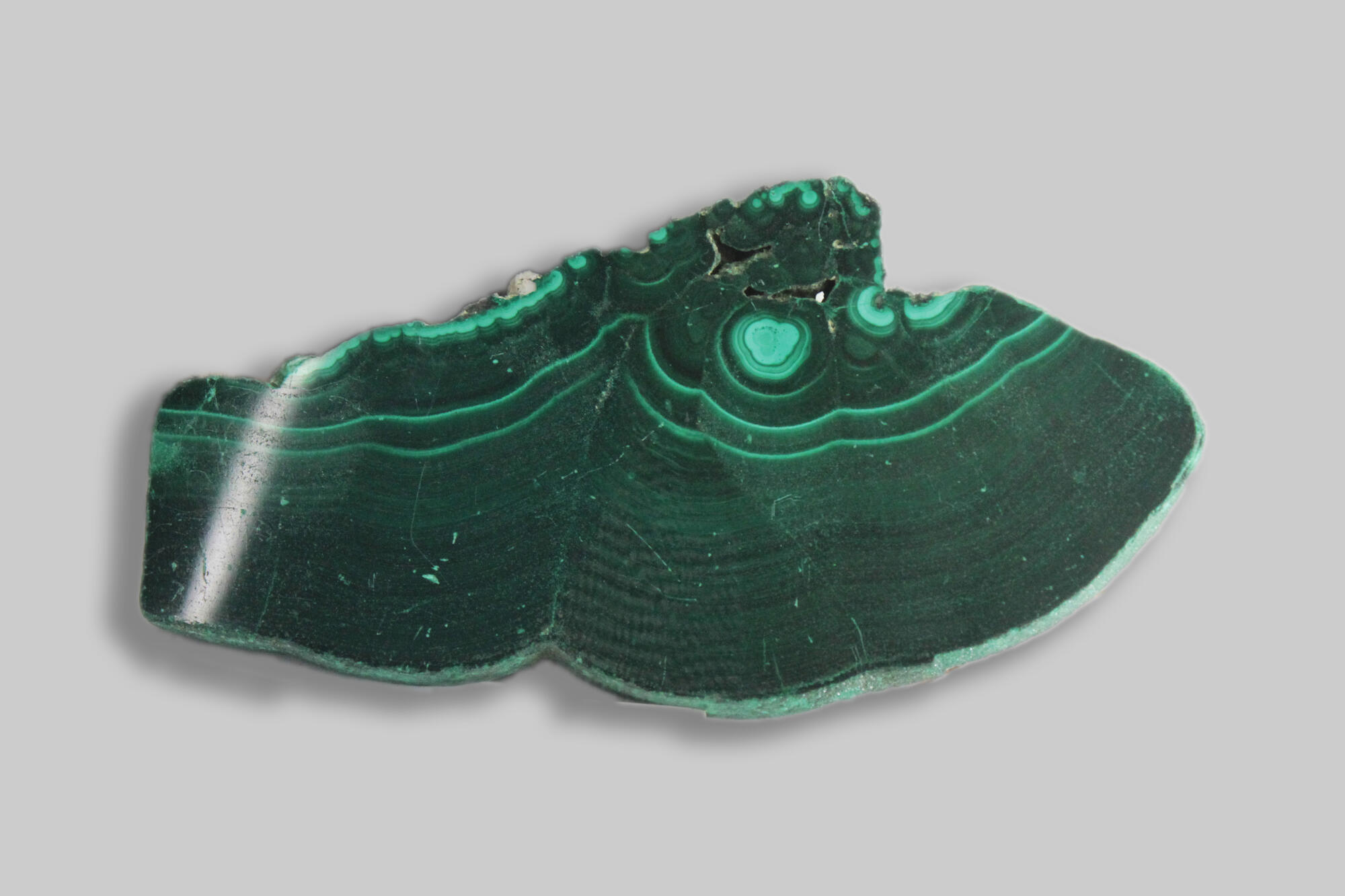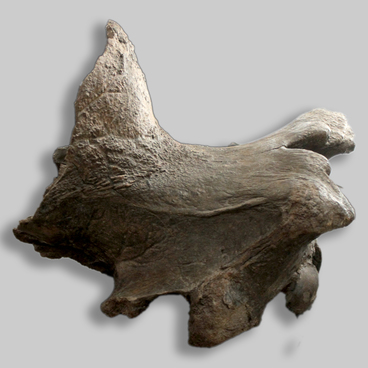In ancient Egypt and Greece, malachite was used to decorate the interiors of buildings, as well as to make jewelry and amulets. The color of malachite varies from grass-green to dark-green and black-green; there is also turquoise-colored malachite. The name of the stone comes from the Greek ‘malakhe’ — a bright green plant called mallow in Russia.
The decorative value of malachite is largely determined by its unique pattern — a kind of combination of differently colored areas, stripes, bundles, and spots. In some cases, single nodules with concentric circles are observed, and sometimes numerous complex patterns. Depending on the angle of incidence for the light, the color of malachite varies from dark to light. When the specimen is turned, spillovers of light appear, forming a moire or silky tint, and that is why it is called ‘plush’ malachite.
Malachite gained wide popularity in the 1740s after the discovery of deposits in the Urals. The most famous deposits are Gumeshevskoye and Mednorudyanskoye. Those have been exhausted by now.
The decorative value of malachite is largely determined by its unique pattern — a kind of combination of differently colored areas, stripes, bundles, and spots. In some cases, single nodules with concentric circles are observed, and sometimes numerous complex patterns. Depending on the angle of incidence for the light, the color of malachite varies from dark to light. When the specimen is turned, spillovers of light appear, forming a moire or silky tint, and that is why it is called ‘plush’ malachite.
Malachite gained wide popularity in the 1740s after the discovery of deposits in the Urals. The most famous deposits are Gumeshevskoye and Mednorudyanskoye. Those have been exhausted by now.
The mineral malachite is used for handicrafts and jewelry, and once it was used to produce paint and help mine copper. Due to its low level of hardness, malachite can be easily processed and polished. Since the end of the 18th century, malachite has been used to do surfacing work on flat surfaces, and since the beginning of the 19th century to surface tridimensional works, such as vases and bowls. Items coated with malachite were often given by Russian emperors as diplomatic gifts to European rulers. Malachite works were exhibited at the Russian pavilion at the World Exhibition in London in 1851.
Since the 1830s, malachite has been used as a material for architectural decoration: the first malachite hall was created by the architect Auguste de Montferrand in a Saint Petersburg mansion on Bolshaya Morskaya Street. Aleksander Bryullov decorated the living room with malachite for Emperor Nicholas I in the Winter Palace. The most expansive interior design work using malachite was done in St. Isaac’s Cathedral.
In Russia, works were often carved from solid stone. To reduce the cost of these products, European artisans covered the base of cheap stone with thin layers of malachite.
In Russia, works were often carved from solid stone. To reduce the cost of these products, European artisans covered the base of cheap stone with thin layers of malachite.



